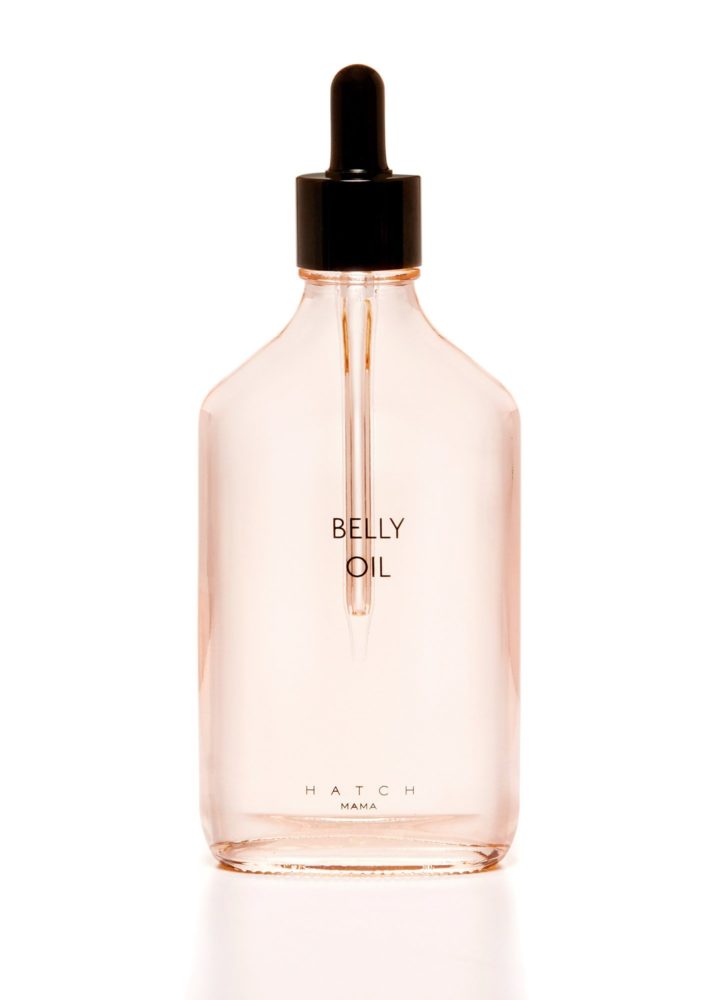It’s no secret that pregnancy brings unexpected changes to your body. Sure, you’re prepared to look in the mirror and see a baby bump, but what about all the little things that make you forget what your body looked like before pregnancy?
It can be tricky to keep track of all the ways your body is changing, but we’re here to try to give you a heads up and help you be as prepared for baby as possible.
Sometimes, it feels easy to feel insecure about the way your bump looks — you are certainly not alone! We’re here to remind you that no one’s bump looks exactly the same, and there is nothing wrong with the way yours looks, including if you experience an extremely common bodily change during pregnancy: a dark line down the center of your tummy, also called linea nigra.
This vertical line of darker skin down your pregnant belly is a totally normal skin change in pregnant women, and it’s not a reason to worry. But, if you are still wondering what it exactly is, if it will go away, and other bodily changes to expect while pregnant, we have all the answers you need right here.
What Is Linea Nigra?
Linea nigra is Latin for “black line” and is the medical term for the dark vertical line that appears on your tummy when you are pregnant. The size of the line can range from woman to woman, but it is generally a quarter to half an inch wide and extends from your belly button to your pubic area and sometimes up to the top of your abdomen. If you have fair skin, the line is more likely to be extra visible.
Hormone Level Changes
When pregnant, you have a higher level of hormones like progesterone and estrogen running through your body, as well as a melanocyte-stimulating hormone that can cause melanin to rise.
Melanin is what darkens the skin, so a rise in this hormone is most likely the cause of the linea nigra. This can also explain melasma, the benign skin condition that causes women’s areolas to darken during pregnancy and breastfeeding. (Melasma is also associated with taking birth control pills).
Does Every Woman Experience Linea Nigra?
We understand the feeling of wondering if you are the only one in the world with a specific pregnancy symptom. There is a lot of power in relating to other women and their pregnancy symptoms, and dealing with your linea nigra is no different, regardless of what airbrushed photos you see online.
In fact, roughly 90% of women will experience some degree of hyperpigmentation on their tummies before their due dates. While 90% does not mean ALL women will experience this phenomenon, it’s pretty safe to say that if you spend some time chatting to your friends in your birthing classes about this phenomenon, at least a few of them will be able to relate to you.
When Does Linea Nigra Appear?
Although most women will experience linea nigra, it’s not certain exactly when you will notice it for the first time. Since the line is triggered by hormones, it’s most likely to appear when your body has a strong increase in hormones.
For most women, this happens five months into the pregnancy, with the linea nigra popping up around the second trimester (about 20 weeks in). However, if you notice the linea nigra much earlier than that or much later, don’t sweat it — every woman is different.
Before month five, you might notice a faint line on your bump that isn’t dark in color. This is called a linea alba, which means “white line.” A linea alba is present for a majority of pregnancies during the first trimester. As your pregnancy continues, the rise in melanin darkens this already existing line.
Can You Make Linea Nigra Go Away?
Like many things you experience while expecting, you might be tempted to spend hours researching ways to get your body back to “normal.” However, there is no way to completely eliminate the dark line by your pubic bone. It’s just a standard part of a healthy pregnancy.
Because this line is caused by prenatal hormonal changes, topical ointments, bleaching creams, and lotions won’t work to get rid of it. But if you’re feeling extra self-conscious, there are a few things you can do to reduce how dark it gets and to take care of it.
First, use sunscreen! Sun exposure will intensify any pigment changes, so be sure to lather up with pregnancy-safe SPF before you go outside. Additionally, don’t wax or use certain products on your bump: Irritation can also darken the pigment.
As always, be sure to give your body some grace. It’s working hard for you and your baby, so try not to judge the way it looks: all bumps are beautiful and amazing!
Will the Dark Line Go Away After Pregnancy?
After nine months of carrying around extra weight, dealing with heartburn, and having a difficult time sleeping, you’ll most likely be ready for your body to feel like yours again. It’s natural to wonder when you can expect the dark line on your bump to go away, but like most things during pregnancy, there is no one answer.
Most women find that their linea nigra will fade gradually after birth as their hormone levels slowly return to baseline. This process typically takes a few weeks to a few months, although some women’s line truly never disappears. Even years after birth, you might be able to see a faint line on your tummy.
There is nothing to be ashamed of if your line doesn’t fully disappear: It’s simply another reminder of how strong, capable, and powerful your body is!
Other Common Body Changes in Pregnancy
Now that you’re prepared to deal with that sneaky dark line that appears on your bump, let’s chat about some other standard pregnancy side effects and what you can do about them.
Breast Changes
One of the most well-known changes, besides a growing belly, are changes to your breasts. Many women find that their breasts swell during pregnancy, as well as that their nipples and areolas tend to swell and become more sensitive.
Keep yourself as comfortable as possible while your breasts prep for your baby’s big arrival. There’s nothing worse than the feeling of your bra clasp or underwire digging into your skin, so while you might be hesitant to give up your favorite lacy bra, consider storing that away and saving it for your life post-pregnancy.
In fact, you might find yourself struggling to fit into your regular bras at all during pregnancy – and that’s okay! Don’t be afraid to ditch your old standbys for cute, comfy everyday bras that fit you during this time, especially if you’re considering nursing or pumping.
Hair and Nails
When you aren’t pregnant, your hair goes through a constant cycle of growth, stagnation, falling out, and regrowth. During pregnancy, you can thank your hormones for hair that feels fuller and stronger. Every day is like living inside your own personal shampoo commercial.
This has nothing to do with the thickness of the strands of your hair but rather the increased estrogen in your body. This estrogen both slows the process of your hair falling out and promotes rapid new hair growth. Note that after giving birth, you might notice some postpartum hair loss.
You may see some changes to your nails as well. Unlike hair growth, which tends to be pretty consistent among women during pregnancy, nail growth varies widely. You may notice that your nails are thicker and grow much faster. Or you might catch your nails on your sweaters and realize they are much more brittle than usual.
Stretch Marks
One of the typical hallmarks of pregnancy are stretch marks. Although stretch marks might seem scary, they are normal and healthy and absolutely nothing to be ashamed of!
Your body goes through a LOT while pregnant, and reminding yourself of all the hard work it’s doing to prepare for giving birth might help you learn to love your tiger stripes rather than trying to hide them.
If you do feel self-conscious, though, there are a few things you can do to take care of your stretch marks. The most important thing to do is make sure that the skin on your bump stays hydrated all nine months long (and longer). Whether you prefer using belly oil or a belly mask, hydrating your skin will make you more comfortable and minimize the appearance of stretch marks.
Ready for Change
Pregnancy can feel overwhelming, but here at HATCH, we are 100% confident that you’ll be able to face whatever changes come your way. You’re strong, and you’ve got a fab support team lifting you up.
Whether we’re talking about morning sickness, pre-delivery jitters, or that subtle dark line running down your tummy, with your inner strength and your fab support team, you’re equipped with everything you need.
Sources:






